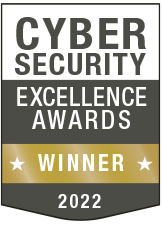Photo Gallery
 |
The Risk Cloud

Additional Info
| Company | LogicGate |
| Company size | 100 - 499 employees |
| Website | http://www.logicgate.com |
NOMINATION HIGHLIGHTS
Founders Matt Kunkel (CEO), Jon Siegler (CPO), and Dan Campbell (CTO) previously worked at Navigant consulting, deploying legacy GRC solutions for large enterprise clients. They saw the significant investments organizations were making in solutions (time, people, financial) and still needed vast customizations to meet the organizations’ requirements. As compliance regulations evolved, companies needed to hire consultants, spending more time and money updating their legacy solutions to comply with new regulations.
LogicGate’s founders recognized the need for more flexible solutions. The company’s Risk Cloud® platform doesn’t require a coding background. Anyone tasked with managing a GRC program can configure and create their risk applications in its no-code platform. Moreover, LogicGate’s innovative product helps organizations centralize and automate GRC processes.
In addition to breaking through the cybersecurity and risk management market, LogicGate — in recognizing and capitalizing on RPA’s value — is positioning itself to significantly impact SaaS. The company continues to advance Risk Cloud’s RPA capabilities, empowering users to:
—Increase productivity.
—Focus on business-critical tasks.
—Provide intelligent vulnerability analysis.
—Provide insights into rectifying an organization’s weak points within its risk management processes.
LogicGate’s flexible software allows organizations to build a holistic asset inventory able to display relationships between customer data and interactions with relevant systems and processes.
Risk Cloud currently includes 25+ proprietary applications LogicGate customers can use to implement best-practice risk and security management processes quickly and efficiently. Each application addresses a distinct use case based on widely adopted standards and critical control frameworks. Organizations can swiftly customize and implement the platform’s pre-built applications to address all unique requirements.
Risk Cloud’s RESTful API, native integrations, API automation partnership with Zapier, and custom Integrations Services team also support countless integrations. These integrations are built for easy plug-and-play into common tools and processes teams already have in place.
How we are different
—Risk professionals have traditionally relied on legacy solutions and spreadsheets. But inflexible, expensive legacy solutions require coding expertise and significant dedicated time and money to implement. Risk Cloud’s end-to-end suite of risk management solutions blends the right mix of flexibility and out-of-the-box functionality. Organizations can manage their risk confidently with an easy-to-use, drag-and-drop interface. Because LogicGate built its platform on a graph database, companies can unlock valuable insights. Risk Cloud allows users to assess high-risk data processing operations and identify relationships between mitigations and existing risk, third-party and controls-management processes.
—LogicGate’s centralized location for critical documents and dashboards empowers organizations to manage GRC operations. This comprehensive storage of important compliance artifacts maintains a complete record for auditing and provides a single source of truth for all risk framework data. LogicGate offers reporting, documentation and signoff features for complete records of all processes — handy in the event of an external audit. Moreover, LogicGate’s Risk Cloud platform fosters collaboration and data sharing between departments, breaking down silos and creating the strong risk management culture organizations need to become more nimble and adaptable.
—In 2021, LogicGate launched its new risk quantification solution, Risk Cloud Quantify™. It converts previously ambiguous data into clear monetary values to communicate risk, giving users a competitive advantage because everyone from the top down understands the language of dollars and cents. This promotes shared understanding across all stakeholders to drive strategic decision-making and proactive risk management.

Vote by Sharing
- Like
- Digg
- Tumblr
- VKontakte
- Buffer
- Love This
- Odnoklassniki
- Meneame
- Blogger
- Amazon
- Yahoo Mail
- Gmail
- AOL
- Newsvine
- HackerNews
- Evernote
- MySpace
- Mail.ru
- Viadeo
- Line
- Comments
- SMS
- Viber
- Telegram
- Subscribe
- Facebook Messenger
- Kakao
- LiveJournal
- Yammer
- Edgar
- Fintel
- Mix
- Instapaper
- Copy Link
Each completed social share counts as a vote for this award nomination.



